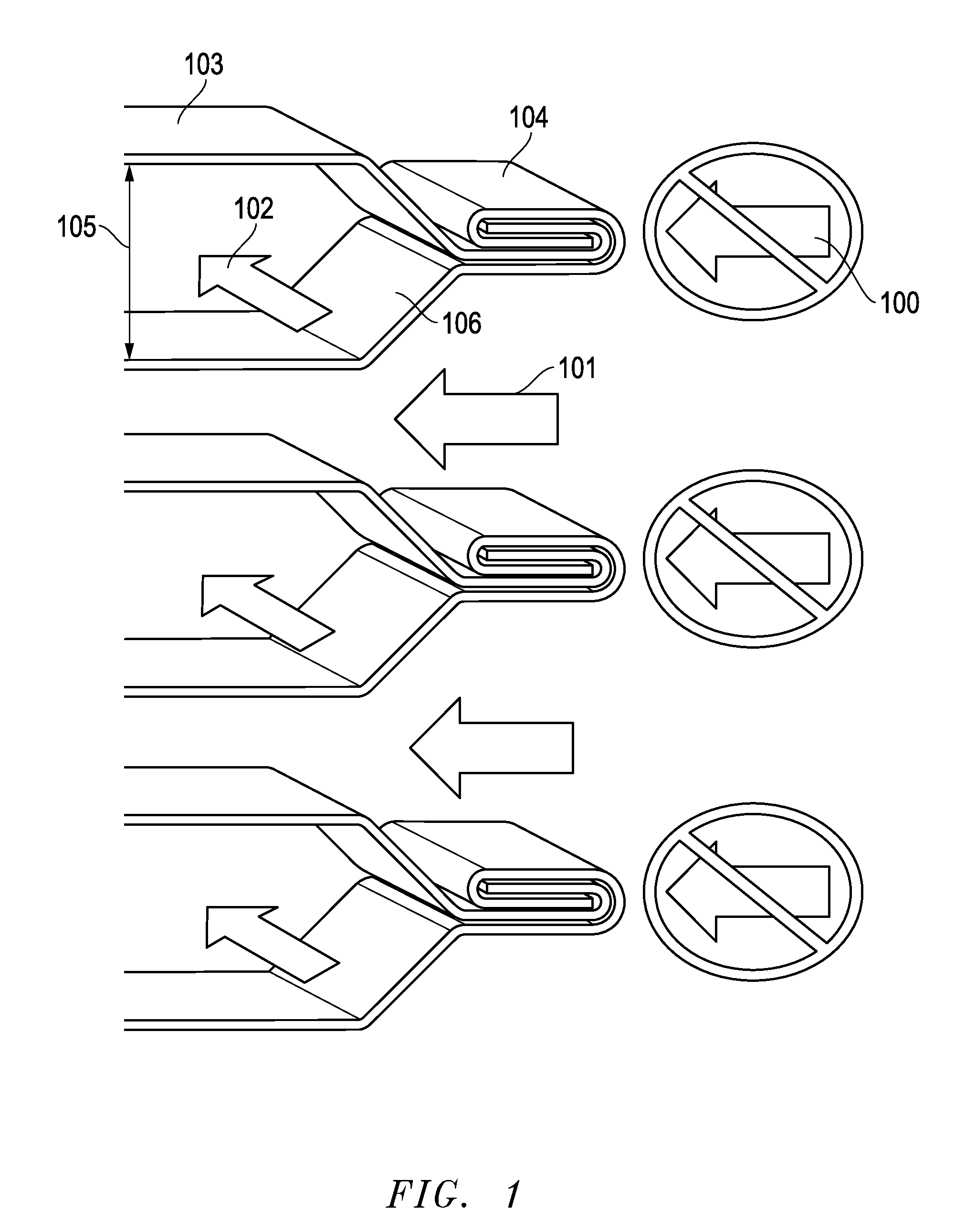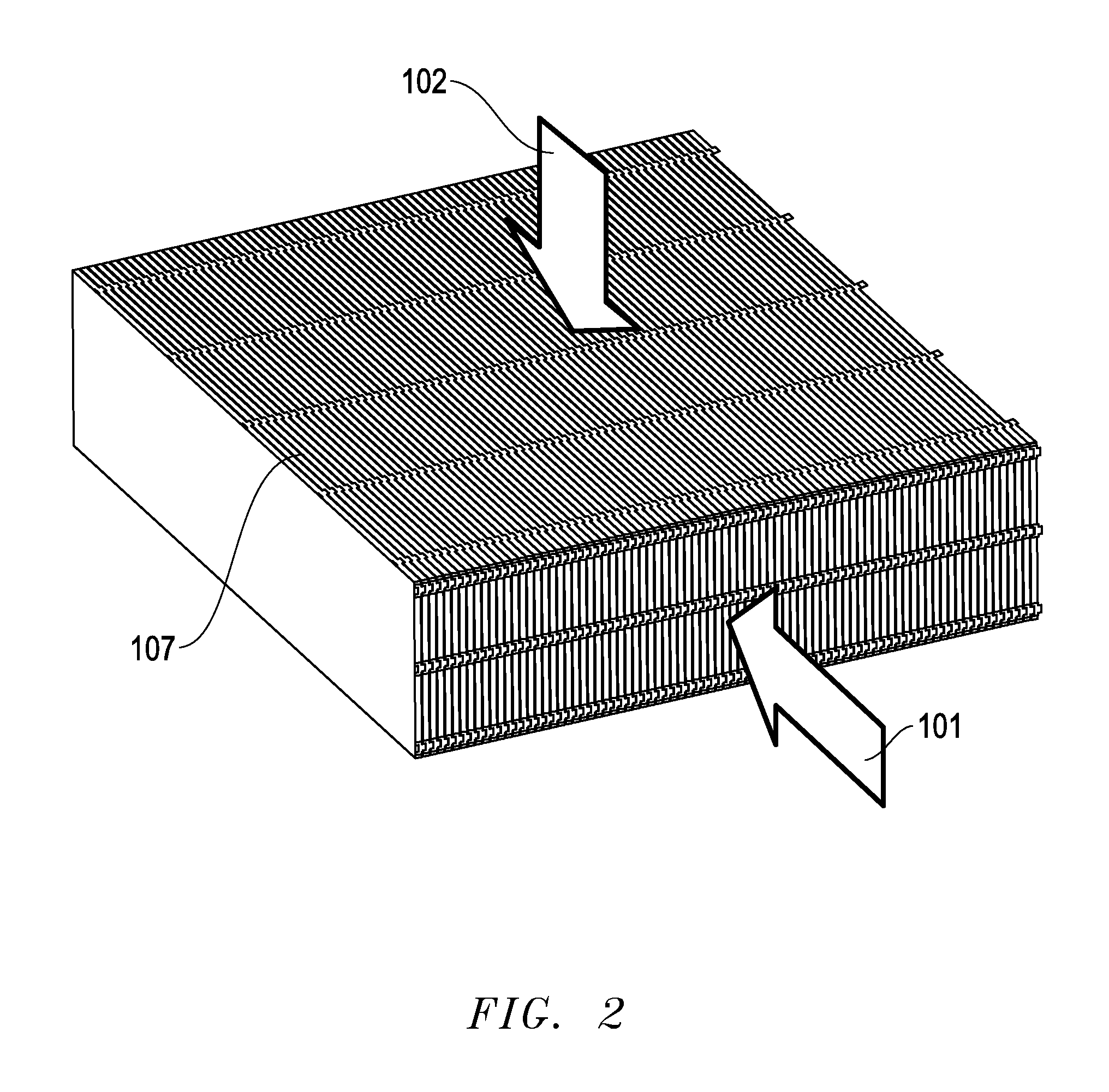Compact stacked fin heat exchanger
a heat exchanger and stacked fin technology, applied in the direction of lighting and heating apparatus, heating types, laminated elements, etc., can solve the problems of increasing product cost and high pressure loss, and achieve the effect of high manufacturing process efficiency
- Summary
- Abstract
- Description
- Claims
- Application Information
AI Technical Summary
Benefits of technology
Problems solved by technology
Method used
Image
Examples
Embodiment Construction
[0020]The present invention is directed to a compact stacked fin heat exchanger. The configuration and use of the presently preferred embodiments are discussed in detail below. It should be appreciated, however, that the present invention provides many applicable inventive concepts that can be embodied in a wide variety of contexts other than a stacked fin heat exchanger. Accordingly, the specific embodiments discussed are merely illustrative of specific ways to make and use the invention, and do not limit the scope of the invention.
[0021]A representation of one embodiment of the present invention is presented in FIG. 2. Two separate airstreams enter the heat exchanger 107 and transfer heat without mixing. A first airstream 101 has a relatively high temperature when entering the heat exchanger 107, and releases heat to a second airstream 102 that has a relatively low temperature when entering the heat exchanger 107. As the first airstream 101 releases heat, its temperature reduces, ...
PUM
 Login to View More
Login to View More Abstract
Description
Claims
Application Information
 Login to View More
Login to View More - R&D
- Intellectual Property
- Life Sciences
- Materials
- Tech Scout
- Unparalleled Data Quality
- Higher Quality Content
- 60% Fewer Hallucinations
Browse by: Latest US Patents, China's latest patents, Technical Efficacy Thesaurus, Application Domain, Technology Topic, Popular Technical Reports.
© 2025 PatSnap. All rights reserved.Legal|Privacy policy|Modern Slavery Act Transparency Statement|Sitemap|About US| Contact US: help@patsnap.com



